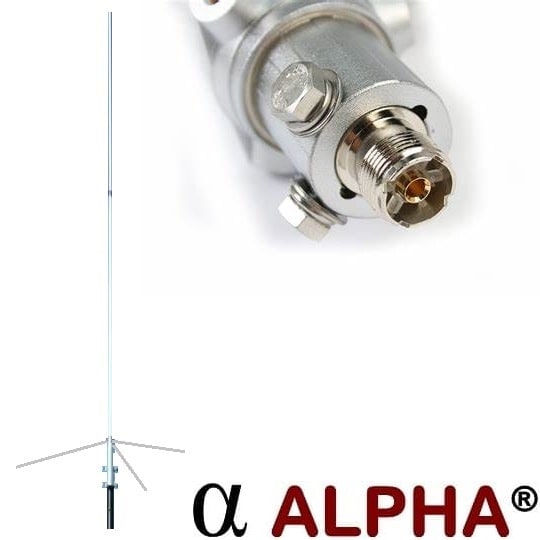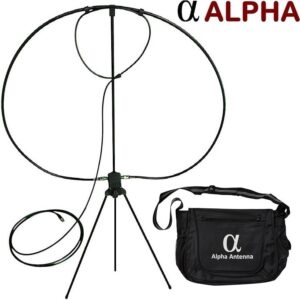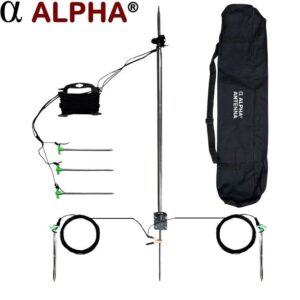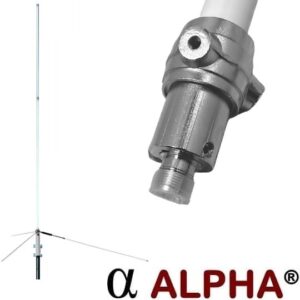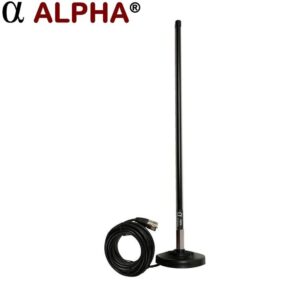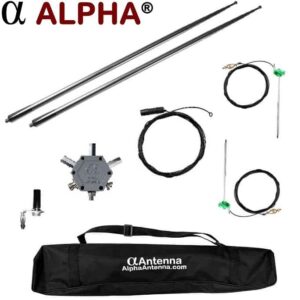Exploring the world of VHF UHF antennas.
Enhancing Your Wireless Experience.
In the vast realm of wireless communication, VHF (Very High Frequency) and UHF (Ultra High Frequency) antennas play a crucial role in enabling seamless transmission and reception of signals across a variety of applications. Whether you’re a radio enthusiast, a television viewer, or a wireless data aficionado, understanding the fundamentals of VHF/UHF antennas can greatly enhance your overall wireless experience.
VHF and UHF Frequencies: What Sets Them Apart?
Before delving into the intricacies of VHF/UHF antennas, it’s important to grasp the differences between VHF and UHF frequencies. VHF operates in the frequency range of 30 MHz to 300 MHz, while UHF spans from 300 MHz to 3 GHz. The primary discrepancy lies in the wavelength, with VHF having a longer wavelength compared to UHF. Due to their varied wavelengths, VHF and UHF signals exhibit distinct characteristics and are utilized for different purposes.
Understanding VHF Antennas:
VHF antennas are commonly employed in applications such as television broadcasting, FM radio, air traffic control, marine communication, and two-way radio communication. These antennas are designed to efficiently transmit and receive signals within the VHF frequency range.
A key aspect of VHF antennas is their physical dimensions. The wavelength of VHF signals necessitates longer antenna elements, typically measuring several feet or meters. This length enables the antenna to resonate with the specific VHF frequency, maximizing signal reception and transmission efficiency.
The two most common types of VHF antennas are the dipole antenna and the yagi antenna. A dipole antenna consists of two identical conductive elements (rods or wires) positioned parallel to each other, with an electrical connection at the center. This design allows for omnidirectional signal propagation, making it ideal for situations where signals are arriving from multiple directions.
On the other hand, a yagi antenna features a more directional design. It consists of multiple conductive elements, including a driven element, reflector, and one or more directors. The yagi antenna’s focused beam pattern enables it to receive and transmit signals from a specific direction, enhancing its gain and signal strength.
UHF Antennas: Versatile Solutions for Modern Communication:
With the advent of digital television, wireless microphones, cellular networks, and various other modern wireless applications, UHF antennas have gained prominence. UHF frequencies offer advantages such as increased bandwidth and better penetration through obstacles, making them suitable for diverse wireless communication needs.
UHF antennas come in various forms, including panel antennas, whip antennas, and log-periodic antennas. Panel antennas are commonly used in cellular base stations and Wi-Fi systems, offering high gain and directional coverage. Whip antennas, with their compact size and omnidirectional characteristics, find applications in portable radios and wireless microphones.
Log-periodic antennas are another common UHF antenna type. They possess a unique design consisting of a series of dipole-like elements with varying lengths. This configuration enables them to operate across a wide range of UHF frequencies, making them valuable for applications where multiple UHF channels need to be received or transmitted.
Factors Affecting Antenna Performance:
When selecting a VHF/UHF antenna, several factors come into play to ensure optimal performance. These factors include antenna gain, frequency range, polarization, and impedance matching.
Antenna gain determines the strength of the signals received or transmitted by the antenna. Higher gain antennas amplify signals, enabling longer-range communication. However, it’s important to strike a balance, as excessively high gain may result in a narrower beam pattern and reduced coverage area.
Frequency range compatibility is crucial for an antenna to operate within the desired frequency bands. VHF and UHF antennas are available in specific frequency ranges
See more Technical Articles
VHF/UHF antennas available from Alpha Antenna
Here is the best Mobile VHF UHF Antenna.
Here is the best Base & Portable VHF UHF 6 Meter Antenna.
-
VHF UHF HF Antenna (EmComm MagLoop)$399.00Rated 4.99 out of 5 based on 99 customer ratings
-
Sale Product on sale2-20M+440 VHF UHF HF Antenna (SS17+ Deluxe) a.k.a. POTA Performer
$249.00Original price was: $249.00.$199.00Current price is: $199.00.Rated 5.00 out of 5 based on 6 customer ratings -
Sale Product on saleVHF UHF 6M Quad-band Antenna (UV6)
$169.00Original price was: $169.00.$129.00Current price is: $129.00.Rated 5.00 out of 5 based on 8 customer ratings -
VHF UHF Mobile Military Antenna (MilCom MOTO)$200.00Rated 5.00 out of 5 based on 4 customer ratings
-
2-40M+440 HF VHF UHF Antenna (HexTenna Basic)$400.00Rated 5.00 out of 5 based on 18 customer ratings

